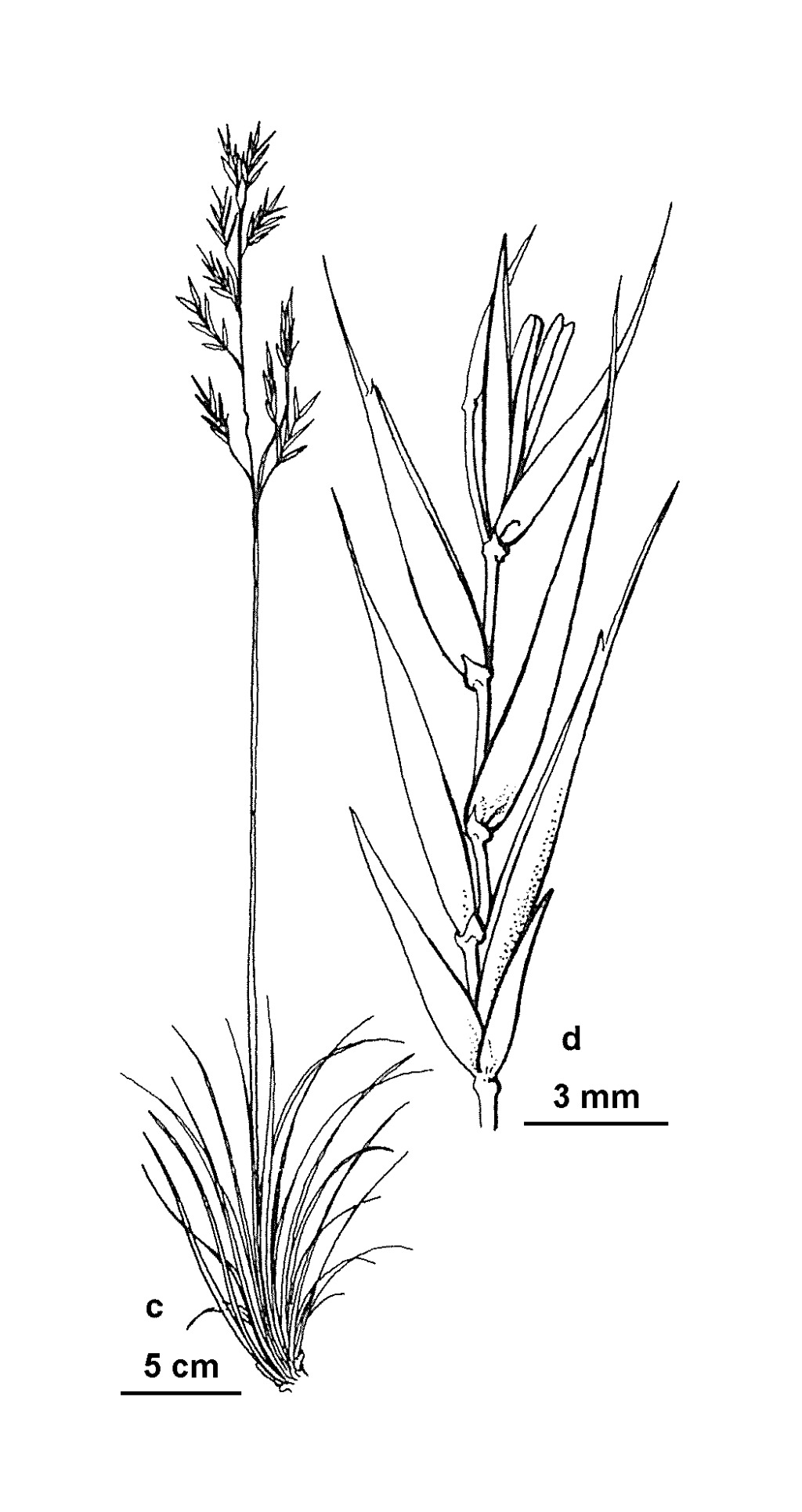Festuca asperula
Vickery Graceful FescueTufted or rhizomatous, often somewhat glaucous perennial, culms to 120 cm high. Leaf-blades inrolled or closely folded, to 30 cm long and 1 mm diam., scabrous (sometimes sparsely and only toward tip of blade), rarely with short, stiff hairs; sheaths brown, pale or purplish, glabrous; ligules c. 1 mm long. Panicle usually narrow, rather loose, to 25 cm long, branches mostly erect but sometimes spreading or drooping. Spikelets 3–7-flowered, 9–15 mm long (excluding awns), pale green to purplish; glumes 2.5–7 mm long, the upper exceeding the lower by 1–3 mm; lemma narrow, 6–9 mm long, excluding awn, sparsely scabrous at least in the upper part; awn 1–4 mm long; palea subequal to lemma. Flowers Nov.–Feb.
VVP, GipP, CVU, EGL, EGU, HSF, HNF, Strz, MonT, VAlp. Also NSW, Tas. Occurs mainly in dryish upland sites (above c. 600 m) in the east, with outlying occurrences at Mt Dandenong, Macedon area and near Creswick.
Specimens from the latter two localities tend to have hispid rather than scabrous leaves but resemble the typical form in other respects. They have in the past been erroneously referred to F. benthamiana, a rare species from SA with longer, more prominently awned lemmas. Specimens with almost smooth leaves bear a striking resemblance to F. rubra, a highly variable species in Europe. A critical revision of this species is needed.
Walsh, N.G. (1994). Poaceae. In: Walsh, N.G.; Entwisle, T.J., Flora of Victoria Vol. 2, Ferns and Allied Plants, Conifers and Monocotyledons, pp. 356–627. Inkata Press, Melbourne.
 Spinning
Spinning

